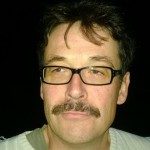Link to Pubmed [PMID] – 9988316
Am. J. Trop. Med. Hyg. 1999 Jan;60(1):14-21
Parasite genotyping by the polymerase chain reaction was used to distinguish recrudescent from newly acquired Plasmodium falciparum infections in a Karen population resident on the northwestern border of Thailand where malaria transmission is low (one infection/person/year). Plasmodium falciparum infections were genotyped for allelic variation in three polymorphic antigen loci, merozoite surface proteins-1 and -2 (MSP-1 and -2) and glutamaterich protein (GLURP), before and after antimalarial drug treatment. Population genotype frequencies were measured to provide the baseline information to calculate the probability of a new infection with a different or the same genotype to the initial pretreatment isolate. Overall, 38% of the infections detected following treatment had an identical genotype before and up to 121 days after treatment. These post-treatment genotypes were considered recrudescent because of the low (< 5%) probability of repeated occurrence by chance in the same patient. This approach allows studies of antimalarial drug treatment to be conducted in areas of low transmission since recrudescences can be distinguished confidently from newly acquired infections.

